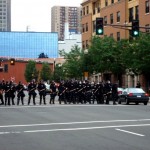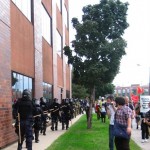Metropolitan State is pleased to welcome Tom Hayden for two days of events across the Twin Cities.
“Tom Hayden changed America,” the national correspondent of the Atlantic, Nicholas Lemann, has written. He was the “single greatest figure of the 1960s student movement,” according to the New York Times. Tom Hayden is an American social and political activist and politician, most famous for his involvement in the anti-war and civil rights movements of the 1960s. Hayden’s continued influence in American culture spans fifty years. He was a famed sixties radical, then a long term state senator, an acclaimed author and teacher at many universities. Today he is passionate opponent of the wars in Iraq and Afghanistan, the polluting quest for oil, and sweatshop conditions across the planet. He not only writes about these subjects, but works toward their realization as a close adviser to many politicians, peace and human rights groups.
Movement Building and the Role of Student Activism: A Student Conversation
Noon – 1:30 p.m. Tuesday, October 7, 2008
Metropolitan State University Minneapolis Campus,
Helland Student Center Lounge
Debating Democracy: What’s at Stake in the 2008 Elections?
Tuesday, Oct. 7, 2008
7-8:00 p.m. Discussion led by Tom Hayden
8:00-9:30p.m. Watch the Debate on the Big Screen!
Metropolitan State University, Library and Learning Center, Ecolab Rm 302
Peace Movements: Past Lessons, Future Prospects
7-8:30 p.m. Wednesday, October 8, 2008
Metropolitan State University Founders Auditorium
ALL EVENTS ARE OPEN TO THE PUBLIC
Light Refreshments provided.
Sponsored by Metropolitan State Students for Social Change, the Student Senate, and The American Democracy Project, for more information about this event, please call 651-793-1285.


